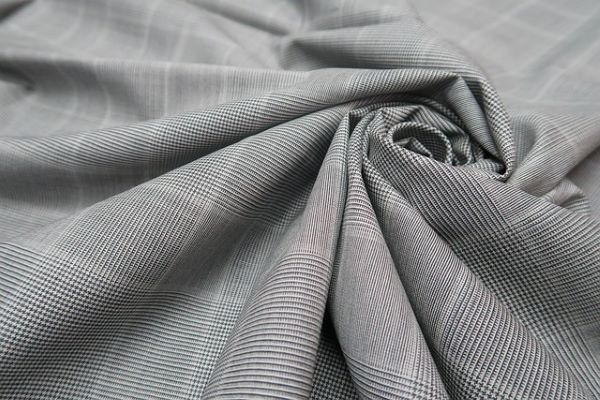Eco-friendly textiles are transforming the fashion and textile industries by offering sustainable alternatives to conventional fabrics that often contribute to environmental pollution and degradation. With increasing awareness of climate change and ethical consumption, eco-friendly textiles are gaining popularity. In collaboration with the Earth Companion Foundation, this article explores eco-friendly textiles, why they are important, the types available, their benefits, their role in saving the environment, and why making the switch is crucial for the future of our planet.
What are Eco-Friendly Textiles?
It refers to fabrics that are produced using sustainable, natural, or recycled materials, minimizing harm to the environment throughout their lifecycle. Unlike conventional textiles, which are often made from petroleum-based synthetic fibers or treated with harsh chemicals, it prioritizes environmental responsibility. They involve ethical production processes that reduce water usage, energy consumption, and pollution, and often utilize biodegradable or recyclable materials. (Source)
Why are Eco-Friendly Textiles Used?
They are used as part of a growing movement towards sustainability in the fashion and textile industries. These textiles address multiple concerns, including reducing carbon footprints, minimizing water pollution, and promoting ethical labor practices. People and brands are turning to these textiles for several reasons:
- Environmental Responsibility: They are designed to reduce waste and pollution at every stage of the textile production process.
- Health and Safety: Traditional textiles often involve the use of harmful chemicals, which can cause skin irritation and other health issues. Eco-friendly alternatives minimize these risks.
- Ethical Consumption: Many of these textile brands focus on fair labor practices, ensuring that workers are paid fairly and work in safe environments. (Source)
Types of Eco-Friendly Textiles
There are several types of these textiles that consumers and manufacturers can choose from, depending on their sustainability goals:
- Organic Cotton
- Grown without the use of synthetic pesticides or fertilizers, organic cotton uses less water and energy compared to conventional cotton. It’s a popular choice for eco-conscious brands and consumers.
- Bamboo
- Bamboo is a fast-growing, renewable resource that requires minimal water and no pesticides. Bamboo fabric is naturally soft, breathable, and biodegradable, making it a top choice for sustainable clothing.
- Hemp
- Hemp is a hardy plant that grows quickly without the need for synthetic chemicals. Hemp fabric is durable, biodegradable, and requires less water than cotton, making it an eco-friendly option.
- Recycled Polyester
- Made from recycled plastic bottles and other waste, recycled polyester helps reduce plastic pollution while offering the same durability and functionality as conventional polyester.
- Tencel (Lyocell)
- Tencel is produced from sustainably sourced wood pulp, typically from eucalyptus trees. It’s manufactured in a closed-loop process, which means that nearly all solvents and chemicals are recycled, minimizing environmental impact.
- Linen
- Derived from the flax plant, linen is a biodegradable, renewable resource. It requires less water and pesticides than cotton, making it a sustainable alternative for clothing and home textiles.
- Piñatex
- Piñatex is an innovative textile made from the fibers of pineapple leaves, a byproduct of the pineapple industry. It is a sustainable alternative to leather and is completely biodegradable. (Source)
Functions of Eco-Friendly Textiles
They serves the same basic functions as traditional textiles, providing comfort, protection, and style. However, they also offer additional benefits such as:
- Environmental Conservation: By minimizing resource use and waste, eco-friendly textiles help conserve water, energy, and natural resources.
- Reduced Pollution: The production processes for it emit fewer greenhouse gases and produce less toxic waste than conventional textile manufacturing.
- Improved Health: Many of these textiles are free from harmful chemicals and toxins, providing safer, healthier options for consumers. (Source)
Why Are Eco-Friendly Textiles Necessary?
The need for it has never been greater, as the fashion and textile industries are among the most polluting sectors globally. Traditional textile production has a devastating impact on the environment:
- High Water Consumption: Conventional cotton farming, for example, uses enormous amounts of water, contributing to water shortages in some regions.
- Chemical Pollution: The use of synthetic dyes, pesticides, and fertilizers in traditional textile production releases harmful chemicals into water bodies, contaminating ecosystems and posing risks to human health.
- Waste Generation: Textile waste contributes significantly to landfills, with synthetic fibers like polyester taking hundreds of years to decompose.
It address these issues by using sustainable materials and ethical production practices. They reduce the environmental footprint of textile production while promoting fair labor conditions. (Source)
Benefits of Eco-Friendly Textiles
Switching to it offers numerous benefits for individuals, communities, and the planet:
- Environmental Benefits
- Reduced Carbon Emissions: Sustainable textile production often requires less energy and emits fewer greenhouse gases, helping to combat climate change.
- Conservation of Resources: By using renewable and biodegradable materials, eco-friendly textiles help conserve water, reduce energy consumption, and minimize waste.
- Pollution Reduction: Eco-friendly textiles are produced with fewer harmful chemicals, reducing water and soil pollution.
- Health Benefits
- Non-Toxic Materials: Many of these textiles are free from harmful chemicals, making them safer for the skin and overall health.
- Hypoallergenic: Fabrics like organic cotton and bamboo are naturally hypoallergenic, making them ideal for individuals with sensitive skin.
- Economic Benefits
- Sustainable Employment: Companies often prioritize fair trade practices, ensuring that workers are paid fairly and work in safe conditions.
- Growth of Green Industries: The demand for eco-friendly textiles is driving growth in sustainable industries, creating jobs and boosting eco-conscious innovation. (Source)
How Eco-Friendly Textiles Help the Environment
It contribute significantly to environmental conservation by reducing pollution, conserving natural resources, and promoting biodiversity:
- Water Conservation
- Organic cotton and hemp use far less water than conventional cotton, helping to alleviate water scarcity in agricultural regions.
- Reducing Toxic Waste
- By using natural or organic dyes and fewer synthetic chemicals, eco-friendly textiles help reduce the contamination of rivers and soil.
- Lower Carbon Footprint
- Recycled materials, like polyester made from plastic bottles, prevent waste from ending up in landfills and oceans. This reduces the carbon emissions associated with the production of new materials.
- Supporting Biodiversity
- Sustainable textile farming practices help preserve ecosystems and protect wildlife by minimizing habitat destruction and the use of harmful pesticides. (Source)
Innovative Eco-Friendly Textile Products
Several innovative its products are already available in the market, showcasing the potential of sustainable fashion:
- Stella McCartney
- Known for her commitment to sustainability, Stella McCartney uses organic cotton, recycled polyester, and other eco-friendly materials in her fashion collections.
- Allbirds Shoes
- Allbirds uses natural materials like merino wool and eucalyptus fibers to create eco-friendly, comfortable footwear that is also biodegradable.
- Pangaia
- This brand produces clothing made from bio-based materials like seaweed and recycled cotton, pushing the boundaries of eco-friendly fashion innovation.
- Adidas x Parley
- Adidas has partnered with Parley for the Oceans to create shoes made from recycled ocean plastic, helping reduce plastic waste in marine environments.
Also, read: Now Know All About Eco-Friendly Paint for Everyday Use
Importance of Switching to Eco-Friendly Textiles
As the world faces environmental challenges like climate change, pollution, and resource depletion, switching to it is a vital step in reducing our ecological footprint. Conventional textile production is responsible for significant water, air, and soil pollution, but these textiles offer a way to mitigate these impacts. By choosing sustainable fabrics, consumers can support environmentally responsible practices, reduce waste, and help drive change in the fashion and textile industries.
Making the switch to it is not just about reducing harm — it’s about actively contributing to the health of the planet. Supporting sustainable brands and products can help reduce deforestation, conserve water, and prevent pollution, ultimately protecting the environment for future generations.
FAQs
1. What are eco-friendly textiles?
They are fabrics made from sustainable, natural, or recycled materials that minimize harm to the environment and human health throughout their lifecycle.
2. Why should I choose eco-friendly textiles?
It help reduce pollution, conserve natural resources, and promote fair labor practices, while also being free from harmful chemicals that can affect your health.
3. Are eco-friendly textiles more expensive?
While eco-friendly textiles can sometimes be more expensive upfront, they offer long-term savings through their durability and environmental benefits. Additionally, increased demand is driving prices down as the market expands.
4. How do eco-friendly textiles help the environment?
Eco-friendly textiles reduce carbon emissions, conserve water, and minimize pollution through the use of natural or recycled materials and sustainable production practices.
5. What are some examples of eco-friendly textile products?
Examples include organic cotton clothing, bamboo-based fabrics, recycled polyester, and innovative products like shoes made from ocean plastic or biodegradable textiles.
Conclusion
They are an essential component of the shift towards sustainable living. By choosing fabrics made from natural, organic, or recycled materials, consumers can significantly reduce their environmental impact while supporting ethical labor practices. With a growing range of innovative and sustainable options, there has never been a better time to make the switch to eco-friendly textiles. In collaboration with the Earth Companion Foundation, this article encourages individuals, designers, and industries to embrace eco-friendly textiles as part of the solution to environmental challenges.





